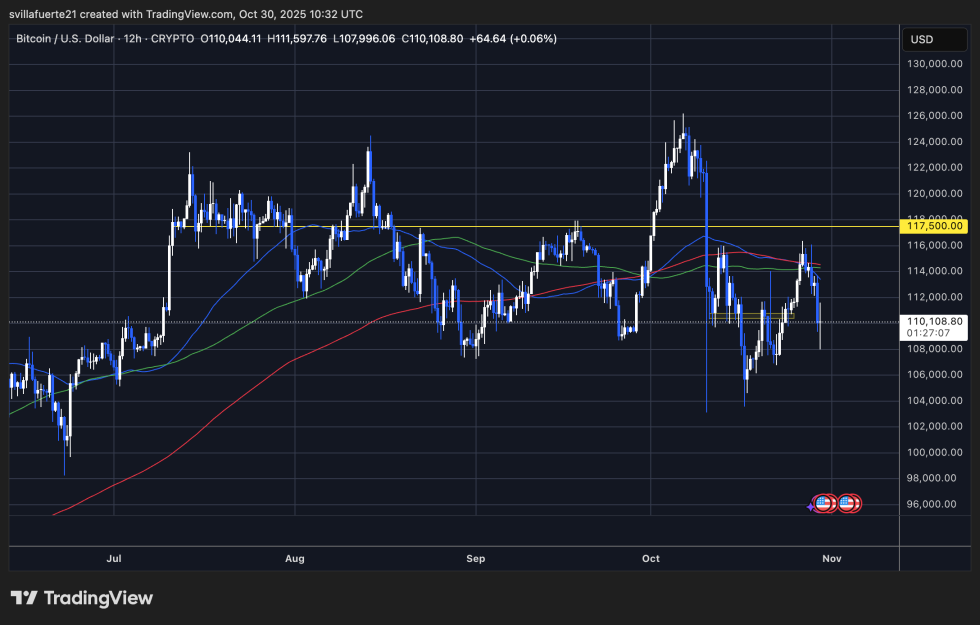In this week’s crypto highlights, we explore the price movements of BTC, SOL, ICP, and CAKE. Additionally, this recap includes other notable industry news items that occurred over the last seven days. Without further ado, let’s dive into the latest market developments.
Table of contents
- Market spotlight: Bitcoin rebounded from $40,500
- Multiple DeFi projects were temporarily compromised due to Ledger’s ConnectKit hack
- Solana’s Saga surged in sales amid the BONK rally
- BlackRock updated its spot Bitcoin ETF filing to adopt cash redemptions
- SafeMoon filed for bankruptcy protection
- One sentence news
- Solana became the fifth-largest cryptocurrency by market cap
- ICP price almost doubled in a week
- CAKE price made a 20% jump in a few hours
Market spotlight: Bitcoin rebounded from $40,500
2023 is coming to an end, and some observers anticipate a Santa Claus rally might occur in crypto markets, amid spot Bitcoin ETF launch anticipation. The Santa Claus rally theory is typically applied to the stock market, and it refers to a period of sustained increase between December 25 and January 2.
However, year-end hasn’t been historically great for Bitcoin. Over the last decade, BTC price increased only four times during the Santa Claus rally period, with the top result being a 35% jump in 2020. In most cases, the asset showed a one-digit price decrease between December 25 and January 2.
According to Kaiko, Bitcoin closes the year down 40% from its annual peak, on average. Currently, Bitcoin is trading near its yearly high, similar to 2020. Notably, a 30% BTC price correction followed shortly after the 2020 Santa Claus rally.
In addition, it seems that some market participants are growing less optimistic about the potential approval of spot Bitcoin ETFs. According to CoinShares, digital asset funds saw minor outflows, ending an 11-week run of inflows. Bitcoin’s estimated leverage ratio (ELR) dropped to historic lows. In past occurrences, this preceded a new downtrend (see picture above). With a few weeks left until highly anticipated spot Bitcoin ETF approval dates, the mood appears to be “wait and see.”
However, crypto enthusiasts still anticipate a significant impact from this event. For instance, Grayscale’s CEO recently said that these instruments could unlock “$30 trillion worth of advised wealth.” Overheated expectations could potentially lead to disappointment in initial demand, potentially reestablishing bearish momentum.
As we mentioned almost a month ago, current events may resemble the December 2017 situation, with the first Bitcoin futures launch on CME and CBOE. But if the market is satisfied with ETF demand, it could potentially bring a new wave of enthusiasm to crypto markets.
Although weekly and daily timeframes continue to show signs of potential correction, and/or consolidation, lower timeframes are in rather bearish territory. The asset broke the descending resistance line (white line), experienced a price movement similar to a double bottom pattern (blue curves), and formed a bullish divergence (cyan line).&
This suggests that the asset may try to set a new 2023 high before New Year. In this case, the $45,000-$49,000 range could act as a potential target for bulls. However, the CME gap hasn’t yet been filled, and the asset is still far from the 20-week EMA, which earlier acted as dynamic support during price rallies. This means a price correction to $40,000, or even $35,000 could still be possible.
Noteworthy market events
Multiple DeFi projects were temporarily compromised due to Ledger’s ConnectKit hack
What happened?
On December 14, Matthew Lilley, SushiSwap’s CTO, asked users to avoid interaction with all decentralized applications (dApps), stating that the “commonly-used connector” was compromised. Later, Lilley and other crypto enthusiasts clarified that Ledger’s ConnectKit was vulnerable.
Essentially, the attack tried to trick users into approving fake transactions that drain funds from their crypto wallets connected to various dApps. According to PeckShield, Zapper and SushiSwap frontends were temporarily compromised. The Balancer team asked users not to use its interface until further notice. Revoke.cash temporarily disabled its website.&
The same day, Ledger released a statement, confirming the hack, and saying that the malicious code was disabled. Users’ hardware devices and the Ledger Live application were reportedly not affected by the attack.&
Ledger CEO Pascal Gauthier said in an open letter to the community that the exploit was the result of a phishing attack on a former employee. He also stated that the exploit was effectively running for less than two hours.
Some market observers estimated around $484,000 in losses from various DeFi projects. On December 20, Ledger announced that it would compensate affected users $600,000.
Community reaction
The “don’t use dApps” statement resonated with the crypto community, and caused a certain amount of chaos. Some questioned the general security of the DeFi sector, after a single phishing link had such an impact. Some asked Ledger why a former employee had access, and enough power to cause this.
Considering the scale of the attack, others saw the result as relatively minor, believing dApps managed to dodge a bullet. Although the pure financial damages of this hack might not seem large compared to other recent exploits, the psychological damage is obvious.
Solana’s Saga surged in sales amid the BONK rally
Crypto enthusiasts have recently adopted a new method of arbitrage — buying a smartphone to claim an airdrop, where the value is higher than the smartphone itself.&
In early December, Solana co-founder Anatoly Yakovenko revealed low sales of the Saga smartphone, which is dedicated to providing a gateway to the Solana ecosystem. Saga was released in May 2023, with a price of $1,000, which has since been cut by 40%, to $599. The move failed to significantly boost sales.
However, since the device launch, each new Saga phone has come with a 30 million BONK token airdrop. At the time of the Saga release, this was worth around $13. But since then the BONK price has surged, showing an almost 10,000% year-to-date performance increase. At one point, the airdrop value was worth more than $1,000, or almost twice that of the official Saga smartphone price.
On December 14, Solana co-founder Raj Gokal tweeted that Saga sales multiplied by over 10 times in just a few days. On December 16, Solana Saga announced that smartphones were sold out. Several phones appeared on eBay, where they were sold for $2,000-$5,000 per unit. Most of these phones were listed as “sealed and unopened,” and their sellers predominantly from the U.S.
Other projects found an opportunity to attract a new user base. For instance, Access Protocol announced an airdrop of 100,000 ACS to Saga users.
BlackRock updated its spot Bitcoin ETF filing to adopt cash redemptions
On December 18, BlackRock revised its spot Bitcoin ETF filing, opting for the cash redemption system over an in-kind one involving BTC payments. BlackRock stressed that in-kind transactions could potentially take place, but are subject to regulatory approval.
The U.S. Securities and Exchange Commission’s (SEC) “cash-only” approach implies that ETF participants must bring cash to acquire additional shares. In turn, if ETF participants decide to buy back shares, BlockRock would need to return cash, and potentially sell their BTC to do so.
Some market observers saw this as a move that could help BlackRock secure its application approval. For instance, Bloomberg analyst Eric Balchunas claimed that “the debate is over,” anticipating the SEC decision in the upcoming weeks.
Invesco and Galaxy also previously updated their filings for spot Bitcoin ETFs with the “cash-only” model. Ark Invest and WisdomTree have hinted that they may allow both cash and in-kind redemptions.
SafeMoon filed for bankruptcy protection
On December 14, SafeMoon filed for Chapter 7 bankruptcy protection in the U.S. Bankruptcy Court in the District of Utah. This development came just one month after the SEC charged SafeMoon, its founder Kyle Nagy, CEO John Karony, and CTO Thomas Smith, with violating securities laws. The agency described the company’s operations as a “massive fraudulent scheme.”
Following the bankruptcy announcement, the SFM token price plummeted by over 50% in just a few days.
One sentence news
- Gary Gensler, the SEC Chair, announced the denial of Coinbase’s petition for rulemaking on cryptocurrency in the U.S., but the crypto exchange plans to appeal this decision.
- The NFT Trader platform suffered a $3 million exploit, but stolen assets were returned for a 10% bounty.
- Bitwise started promoting its spot Bitcoin ETF in the U.S.
- S&P Global Ratings debuted its stablecoin ranking system, giving Tether (USDT) a poor score.
- The Arbitrum One network experienced a temporary outage, caused by a surge in Bitcoin Ordinals-inspired inscriptions.
- Worldcoin unveiled World ID 2.0, which introduced integration with popular platforms including Shopify, Mercado Libre, Reddit, and Telegram.&
Notable price performances
Solana became the fifth-largest cryptocurrency by market cap
The SOL price surged by over 20% in a week, helping Solana surpass XRP, and enter the top five digital assets by market cap. Over the last few weeks, the Solana ecosystem has enjoyed increased user activity:
- Solana flipped Ethereum, becoming the largest network in terms of NFT sales.
- Solana temporarily had more decentralized exchange (DEX) trading volume than any other chain.
- Solana’s total value locked (TVL) has more than doubled in a month.
As a result, the SOL price reached its highest point since April 2022. However, the daily RSI has already started forming a bearish divergence, indicating that a price correction may follow soon. The 20-day EMA currently acts as dynamic support. Its breakout could open the road to a 50-day SMA.
ICP price almost doubled in a week
The ICP price joined the top climbers club, showing an around 90% weekly price increase at one point. This helped the asset update its 2023 high, and break an established ascending channel (white lines).
However, the asset reached an overbought zone on daily and weekly timeframes, and quickly started experiencing a correction. The recent price movement resembles an ABC correction wave, hinting that bears may continue to dominate. The 0.382, and/or 0.5 Fibonacci points could become the next potential targets for this group.
CAKE price made a 20% jump in a few hours
On December 21, a proposal to reduce CAKE’s total supply from 750 million, to 450 million tokens was published on the PancakeSwap forum. According to the author of this proposal, a lower cap could be “sufficient to gain market share across all chains and sustain the veCAKE model.”&
After the proposal was posted, the CAKE price jumped by over 20% in a few hours, breaking the $2.50 resistance area. CAKE’s trading volume increased by three times amid this move. The Awesome Oscillator (AO) approached a zero level on a daily chart, and moved above it on lower timeframes.&
This hints that bulls may have an upper hand, and could try to push the asset to $2.81. However, the price may first need to retest the 20-day EMA to show that a new wave of bullish momentum is valid.
Tune in next week, and every week, for the latest CEX.IO crypto highlights. For more information, head over to the Exchange to check current prices, or stop by CEX.IO University to continue expanding your crypto knowledge.
Exchange Plus is currently not available in the U.S. Check the list of supported jurisdictions here.
Disclaimer: For information purposes only. Not investment or financial advice. Seek professional advice. Digital assets involve risk. Do your own research.

You can get bonuses upto $100 FREE BONUS when you:
💰 Install these recommended apps:
💲 SocialGood - 100% Crypto Back on Everyday Shopping
💲 xPortal - The DeFi For The Next Billion
💲 CryptoTab Browser - Lightweight, fast, and ready to mine!
💰 Register on these recommended exchanges:
🟡 Binance🟡 Bitfinex🟡 Bitmart🟡 Bittrex🟡 Bitget
🟡 CoinEx🟡 Crypto.com🟡 Gate.io🟡 Huobi🟡 Kucoin.











Comments